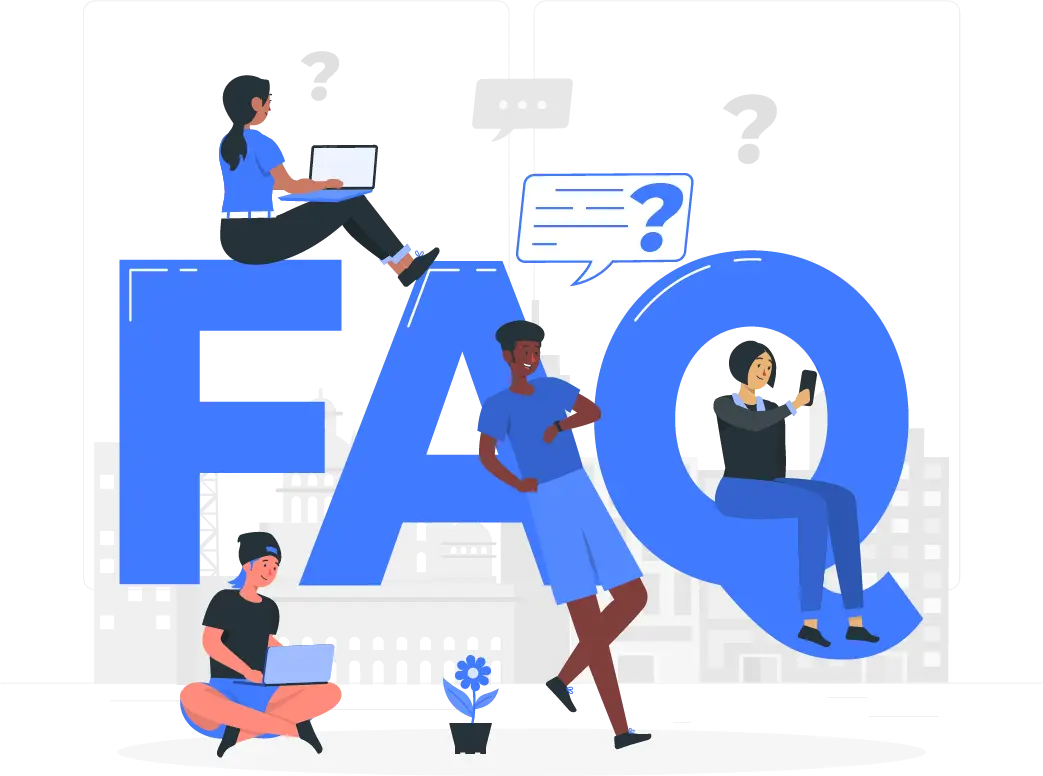Loading




A. Performance testing evaluates how well a website or app performs under various conditions, such as high traffic, heavy loads, and diverse user interactions.
A. Performance testing finds and fixes performance bottlenecks prior to launch, ensuring that websites and apps provide the best possible user experiences.
A. Benefits include improved user satisfaction, reduced downtime, increased reliability, and better scalability to handle growing user demands.
A. Performance testing facilitates rapid iterations and deployments by providing continuous feedback on performance indicators that are integrated into Agile and DevOps processes.
A. Perform performance testing regularly throughout the software development lifecycle and whenever significant changes or updates are made to the website or app.
A. Testing needs to be performed at every stage of the development process, including requirement collecting, design, development, updating, and release.
A. Security testing identifies vulnerabilities and ensures the software is protected against threats, unauthorized access, and data breaches.
A. Alpha testing is conducted by internal staff to identify bugs and issues before releasing the software to a select group of users for beta testing.
A. Common tools include Selenium, JUnit, LoadRunner, JMeter, QTP, TestComplete, and security testing tools like OWASP ZAP.
A. Website testing is essential to find and address problems before they affect user experience and guarantee a smooth, safe, and effective website that achieves company goals.
A. Regression testing ensures stability and continuity after alterations by confirming that recent updates or changes to the code do not negatively impact the functionality of the website as it is.
A. Managing test environments, working with a variety of platforms and devices, obtaining return on investment (ROI) for test automation, preserving test data integrity, and responding to changing security risks are some of the challenges.
A. Utilize testing findings to identify and fix problems in a timely manner, boost user experience, optimize website performance, and comply with SEO best practices for higher search engine rankings.
A. Best practices include comprehensive test planning, regular testing iterations, collaboration between developers and testers, leveraging both automated and manual testing, and continuous improvement based on feedback.
A. Traditional marketing usually involves the direct promotion of products or services, whereas content marketing focuses on providing helpful data to inform and entertain audiences.
A. By providing useful content that is protected behind forms and enticing users to provide contact information in exchange for access, content marketing creates leads.
A. Do some research on the characteristics, hobbies, problems, and habits of your audience in order to provide content that speaks to and meets their requirements.
A. Establish a reputation by presenting insightful content on a regular basis, offering professional advice, taking part in industry discussions, and sharing success stories.
A. To improve and optimize your social media marketing (SMO) efforts, keep track of platform updates, test various content kinds and approaches, and ask your audience for feedback. You should also continuously review performance statistics.
A. Hashtags are keywords or phrases preceded by "#" used to categorize content. They help increase visibility, reach a broader audience, and enhance engagement on social media platforms.
A. Key elements include optimizing profile information, using relevant hashtags, sharing engaging content, encouraging user interaction, and leveraging social media ads to boost reach.
A. Increased brand awareness and consumer loyalty result from SMO, which also improves your business's online visibility, increases traffic, fosters better audience interaction, and raises your company's search engine results.
A. Social media optimization (SMO) is the act of making your social media profiles and content more visible and engaging so that people will visit your website more frequently.
A. By joining forums, attending discussions, following reliable SEO blogs, keeping an eye on search engine algorithm changes, and keeping up with industry news, you can stay informed.
A. Because it helps target keywords, improves relevancy, and draws in organic visitors, content is essential to SEO.
A. Terms or phrases entered into search engines are known as keywords. Researching relevant keywords is a crucial step in SEO since it allows content to be optimized and targeted traffic to be drawn in.
A. The competitiveness of the website, its past performance, and the SEO effort all affect SEO results. It usually takes a few months to a year to see visible improvements.
A. Three broad categories can be used to classify SEO:
On-Page SEO: Content, HTML components, and website structure optimizations.
Off-Page SEO: Increasing domain authority and constructing backlinks.
Technical SEO: Improving the structure and functionality of websites for search engines.
A. SEO is crucial because it helps your website rank higher in search engine results, increasing visibility, traffic, and potential customers or users.
A. Yes, creating brand consistency and promoting one identity across all platforms is made possible by integrating branding features like logos, colors, and typography into the app design.
A. Sketch, Figma, Adobe XD, and InVision are often used tools for wireframing, prototyping, and teamwork. For intricate graphic design, programs like Photoshop and Illustrator are utilized.
A. It't depending on how complicated the software is, the length can change; it usually lasts anywhere from a few weeks to many months. Research, wireframing, prototyping, user testing, and iterations are some of the phases that are involved.
A. Through usability testing, persona development, and user research. The software is improved to be more intuitive and user-friendly through iterative design and input from actual users.
Since app design impacts how users interact with the app, it is important. Effective design can have a big impact on an app's success and user retention rates by improving usability and raising user satisfaction.
A. A few of the hottest trends in website design right now are voice user interfaces (VUIs), 3D features, immersive multimedia experiences, bold font, dark mode themes, and minimalistic design. To build a great website, usability and functionality must be balanced with trends.
A. Make sure your website has an easy-to-use interface, quick loading times, a mobile-friendly layout and design, accessible content, and eye-catching graphics. Finding areas for improvement can also be aided by performing usability testing and getting user input.
A. In summary, website design is essential for businesses because it impacts various aspects of their online presence, from branding and user experience to search visibility and conversions, ultimately contributing to their overall success and growth.
A: While it is possible to create software using DIY software development tools, a professional software developer can provide a higher level of customization, functionality, and security. A professional software developer can also ensure that your software is optimized for user experience, mobile-friendly, and accessible to users with disabilities. Investing in professional software development can provide a better return on investment and help your business succeed in the long term.
A: There are several types of software development, including:
Web Development: This involves developing web-based applications that are accessed through a browser.
Mobile App Development: This involves developing software applications that are designed specifically for mobile devices.
Desktop Software Development: This involves developing software applications that are installed and run on desktop computers.
Enterprise Software Development: This involves developing large-scale software systems that are used to manage business operations and data.
A: Software development can benefit your business in several ways, including:
Streamlining Processes: Custom software can automate and streamline business processes, increasing efficiency and reducing costs.
Data Management: Software can help your business manage and analyze data, providing valuable insights and supporting data-driven decision-making.
Scalability: Custom software can be designed to grow and evolve with your business, allowing you to scale your operations as needed.
Competitive Advantage: Custom software can provide a competitive advantage by offering unique functionality and features that are not available in off-the-shelf solutions.
Customer Engagement: Software can provide a platform for customer engagement, such as through personalized messaging, in-app messaging, and social media integration.
A: Software development is the process of designing, creating, testing, and maintaining software applications. Software can range from simple mobile apps to complex enterprise-level systems and is used in a wide range of industries and business applications.
A: While it is possible to create a mobile app using DIY app builders, a professional app developer can provide a higher level of customization, functionality, and security. A professional app developer can also ensure that your app is optimized for user experience, mobile-friendly, and accessible to users with disabilities. Investing in a professional app development can provide a better return on investment and help your business succeed in the long term.
A: There are several types of mobile apps, including:
Native Apps:These apps are designed specifically for a particular mobile operating system, such as iOS or Android.
Web Apps: These apps run in a mobile browser and are accessed through a website.
Hybrid Apps: These apps combine elements of both native and web apps, allowing for a more customized user experience.
A: App development can benefit your business in several ways, including:
Customer Engagement: A mobile app can provide a platform for customer engagement, such as through personalized messaging, push notifications, and in-app messaging.
Brand Building: A well-designed mobile app can help establish your brand identity and build brand awareness.
Customer Loyalty: A mobile app can create a more personalized experience for customers, making them more likely to engage with your business and become loyal customers.
E-commerce: With an e-commerce mobile app, your business can sell products or services online, increasing sales and revenue. Data collection: A mobile app can provide valuable data on user behavior and preferences, allowing your business to make data-driven decisions.
A: Website development can help you stand out from your competitors by providing a professional, user-friendly, and visually appealing online presence. A well-designed website can convey your unique value proposition and differentiate your business from competitors. Additionally, a website can provide a platform for customer engagement and communication, allowing you to build relationships with customers and create a loyal customer base.
A. App design entails developing an application's user interface (UI) and overall user experience (UX) to make sure it is aesthetically beautiful, intuitive to use, and offers a smooth experience.
A:Website development can benefit your business in several ways, including:
Online Presence: A website allows your business to have an online presence, making it easier for potential customers to find you and learn about your products or services.
Customer Reach: With a website, your business can reach a broader audience beyond your local area, potentially increasing your customer base.
Brand Building: A well-designed website can help establish your brand identity and build brand awareness.
Marketing Tool: A website can serve as a marketing tool, allowing you to showcase your products or services, and communicate your value proposition to potential customers.
Customer Engagement: A website can provide a platform for customer engagement, such as through customer reviews, blog posts, and social media integration.
E-commerce: With an e-commerce website, your business can sell products or services online, increasing sales and revenue.
The amount that web designers make per website can vary widely depending on factors such as their level of experience, location, and the complexity of the project. Some web designers charge a flat fee per website, while others charge an hourly rate. According to salary data from Glassdoor, the average salary for a web designer in the United States is around $53,000 per year, or $25 per hour.
Yes, it's important for websites to be mobile-friendly in today's digital landscape. Many web design companies offer responsive design, which ensures that your website will adapt to different screen sizes and be easily accessible on mobile devices. Make sure to ask your web design company about their mobile optimization services.
Web design typically refers to the visual and user experience aspects of a website, including layout, colors, typography, and graphics. Web development involves the coding and technical aspects of building a website, including database integration, content management systems, and programming languages. Many web design companies offer both design and development services.
The timeline for website design can vary depending on the size and complexity of the project. A simple brochure-style website may take a few weeks, while a more complex e-commerce site could take several months. It's important to discuss the timeline with your web design company and make sure there are clear expectations and deadlines in place.
When choosing a web design company, it's important to consider their portfolio, experience, and client reviews. Look for a company with a portfolio that showcases a variety of styles and industries, and check to see if they have experience working with businesses similar to yours. Client reviews and testimonials can also provide valuable insight into the quality of their work and their level of customer service.
When choosing a web design company, it's important to consider their portfolio, experience, and client reviews. Look for a company with a portfolio that showcases a variety of styles and industries, and check to see if they have experience working with businesses similar to yours. Client reviews and testimonials can also provide valuable insight into the quality of their work and their level of customer service.